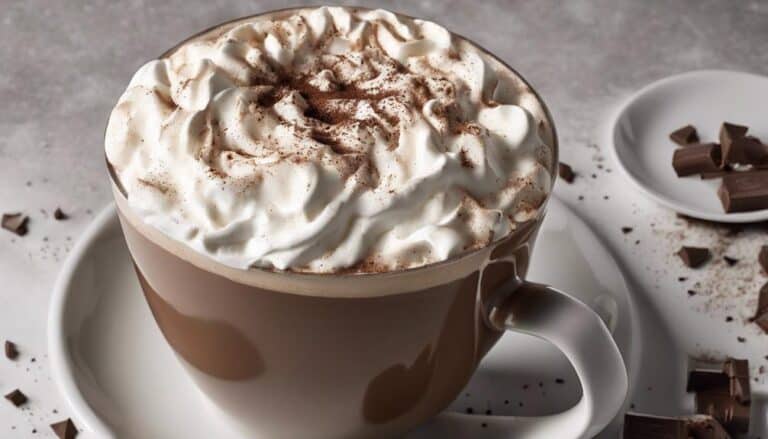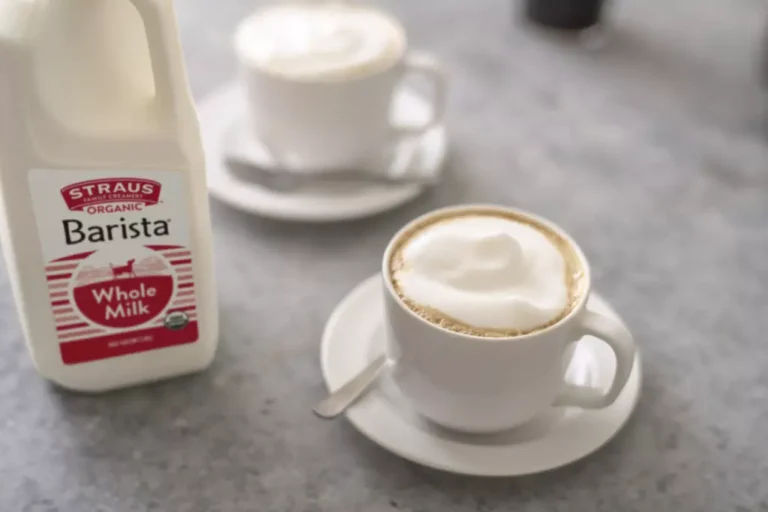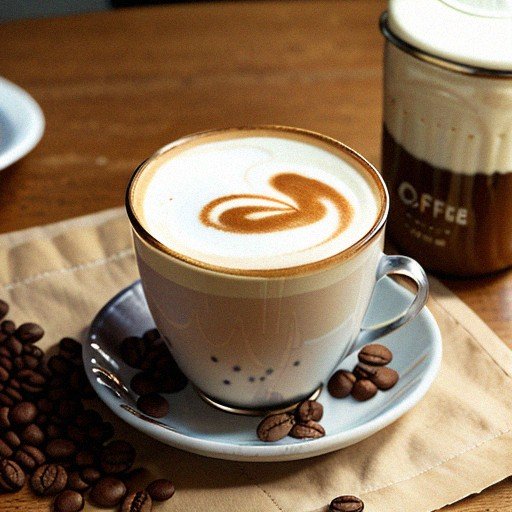What Is the Difference Between a Latte Cappuccino and Mocha?
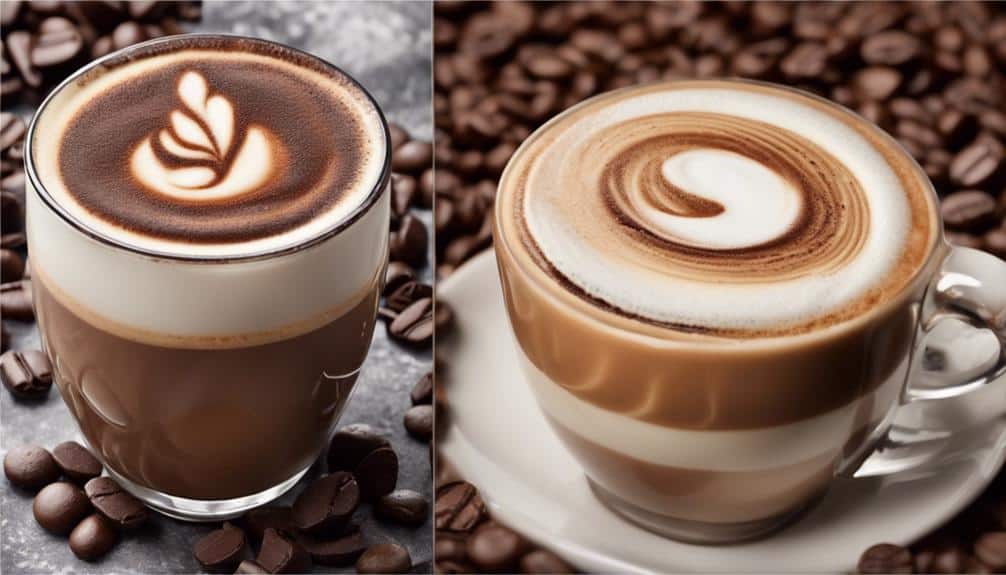
When it comes to coffee, the saying goes, 'The proof is in the pudding.' But have you ever wondered about the nuances between a latte, cappuccino, and mocha?
The distinctions may seem subtle, but each cup holds its own unique blend of flavors and textures that cater to different preferences. Let's explore how these popular espresso-based beverages diverge in terms of ingredients, brewing techniques, and overall experience.
Origins and Ingredients
When exploring the origins and ingredients of popular coffee beverages like lattes, cappuccinos, and mochas, it becomes evident that each has a unique history and composition that contribute to their distinct flavors and characteristics.
Lattes, originating from Italy, consist of espresso, steamed milk, and a layer of milk foam. This combination results in a balanced and smooth taste, appreciated by many.
Cappuccinos, also originating from Italy, have equal parts espresso, steamed milk, and foam. They're known for being denser and stronger in flavor compared to lattes due to the higher espresso content.
Mochas, on the other hand, have a rich history originating from the port city of Mocha in Yemen. These delightful beverages combine coffee, chocolate, and milk to create a harmonious blend of flavors that coffee enthusiasts adore.
Understanding the roots and ingredients of lattes, cappuccinos, and mochas adds depth to the appreciation of these beloved coffee drinks.
Brewing and Preparation Methods
Exploring the brewing and preparation methods of lattes, cappuccinos, and mochas reveals the intricate steps involved in crafting these beloved coffee beverages. When it comes to brewing these delightful drinks, each has its own unique process that contributes to its distinct flavor and texture:
- Espresso Foundation: All three beverages start with a base of rich and concentrated espresso, providing a robust coffee flavor to build upon.
- Steamed Milk Technique: Lattes are distinguished by their higher proportion of velvety steamed milk poured over espresso, resulting in a creamy and smooth texture.
- Foamy Finish: Cappuccinos feature equal parts espresso, steamed milk, and foam carefully layered to create a harmonious balance of flavors and a luxurious mouthfeel.
- Chocolate Indulgence: Mochas stand out with the addition of chocolate in the form of cocoa powder or syrup, delivering a sweet and decadent twist to the coffee experience.
Mastering the brewing and preparation methods is key to achieving the perfect harmony of espresso, steamed milk, and chocolate in lattes, cappuccinos, and mochas.
Flavor Profile and Characteristics
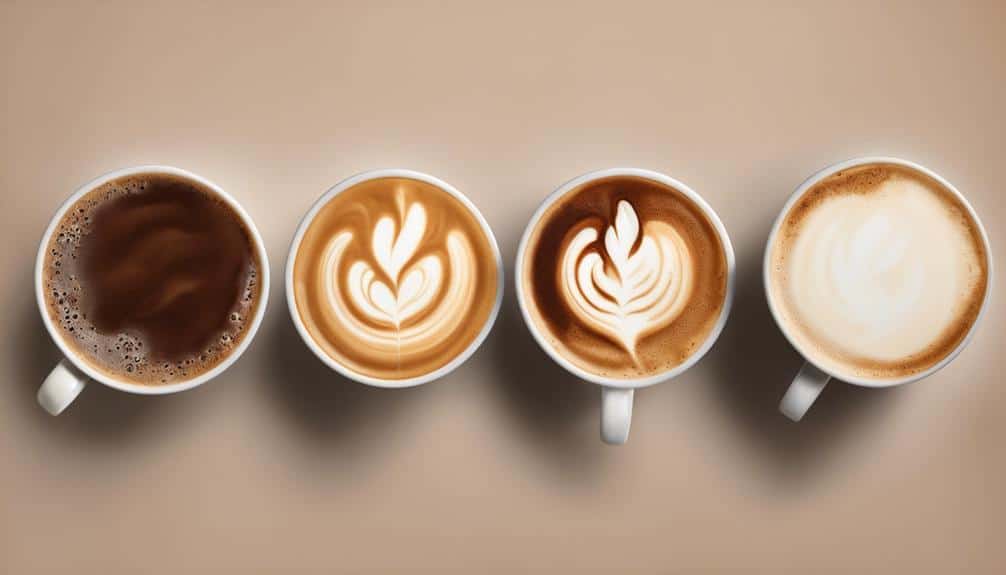
In crafting lattes, cappuccinos, and mochas, the flavor profiles and characteristics of each beverage offer distinct experiences tailored to diverse preferences. A cappuccino presents a creamy taste with a predominant espresso flavor that can be complemented by chocolate, creating a well-balanced coffee and milk combination.
On the other hand, mochas are known for their sweet profile, where chocolate takes the spotlight, always being a key ingredient. Mochas cater to those with a preference for a sweeter, chocolate-infused coffee experience.
Cappuccinos, with their robust coffee flavor and creamy texture, are favored by many worldwide. They strike a balance between the intensity of coffee and the smoothness of milk, providing a rich and satisfying drink.
While mochas are the go-to for chocolate lovers seeking a sweet and indulgent treat, cappuccinos remain a classic choice for coffee enthusiasts looking for a more traditional and coffee-forward option.
Milk and Foam Differences
With regards to milk and foam variances in coffee beverages, the distinctions in texture and composition play a crucial role in defining the unique characteristics of lattes, cappuccinos, and mochas.
Here are some key differences to note:
- A latte typically contains more steamed milk and a thin layer of foam, resulting in a smoother texture compared to a cappuccino.
- Cappuccinos consist of equal parts espresso, steamed milk, and foam, creating a creamier and foamier texture.
- Mochas include chocolate in addition to espresso and milk, offering a sweet and chocolatey flavor profile.
- The foam in a cappuccino is thicker and more abundant than the foam found in a latte or mocha.
Understanding these variations in the milk and foam components of these popular coffee beverages can help coffee enthusiasts choose the perfect drink to suit their preferences.
Caffeine Content and Variations
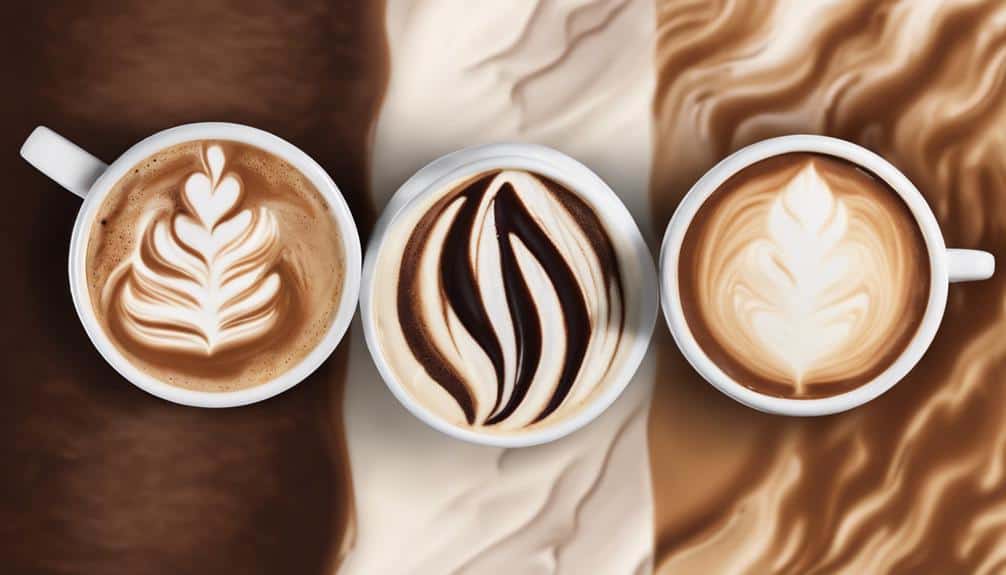
When discussing the caffeine content and variations in popular espresso-based drinks like lattes, cappuccinos, and mochas, it's important to consider the distinct levels of caffeine present in each beverage. A latte typically contains around 75 mg of caffeine in a 12-ounce serving, while a mocha tends to have approximately 95 mg per 12-ounce serving due to the addition of chocolate.
Cappuccinos, on the other hand, are generally stronger in caffeine content than lattes and mochas because of the higher ratio of espresso used in their preparation. The caffeine content in these espresso-based drinks can vary depending on the number of espresso shots added, with lattes falling between cappuccinos and mochas in terms of caffeine strength.
Mochas, known for their sweeter taste profile, offer a unique combination of espresso and chocolate that sets them apart from lattes and cappuccinos.
Conclusion
In conclusion, the differences between a latte, cappuccino, and mocha lie in their unique ingredients, brewing methods, and flavor profiles.
While a latte offers a balanced and smooth taste, a cappuccino provides a stronger and denser flavor with a layer of foam.
On the other hand, a mocha delivers a sweet and chocolatey experience with the combination of coffee, chocolate, and milk.
Each of these popular coffee drinks offers a distinct and enjoyable experience for coffee lovers.
